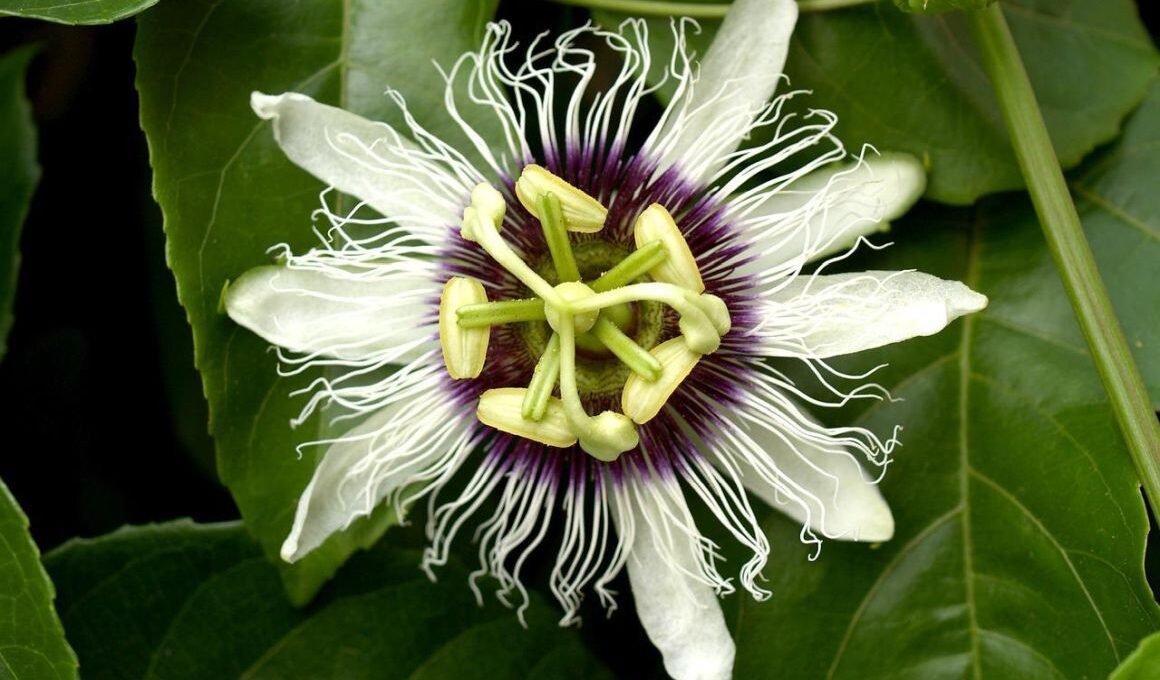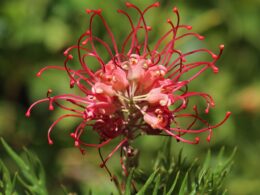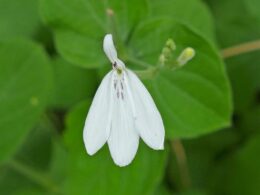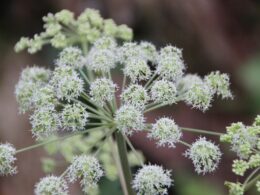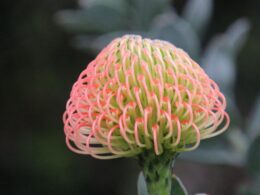The passion flower vine (Passiflora) is a beautiful plant that has been known for centuries. It’s native to the Americas, and has been used for medicinal purposes by the indigenous people of the region. Learn all about its properties, symbolism and growing needs!
What Is a Passion Flower Vine? Characteristics and Origin
The passion flower vine (Passiflora) is a beautiful and unique plant that is native to Mexico, Central America, the United States, and South America. It’s also been naturalized in other regions, such as Spain. Passiflora grows in a variety of habitats, including forests, prairies, and gardens.
The vine can reach up to 30 feet in length and produces large, showy flowers. The flowers are usually white or purple, and each one has a prominent center (corona). The passion flower vine is a popular landscaping plant, and it’s also grown for culinary purposes. The vine’s foliage and roots are used to make tea, and the fruits are eaten as a snack or used in products like jams, juices, and jellies.
Passion Flower – Etymology
The passion flower vine gets its name from the Christians who saw it as symbols of the passion of Christ. They believed that the flower’s parts represented different aspects of the crucifixion story. For example, the purple petals were thought to represent Jesus’ purple robe, and the tendrils represented the whips used in his flagellation.
Outside of Catholic and Christian symbolism, passion flowers have reminded people of the face of a clock. For that reason, they’re literally called ‘clock-flower’ in Israel and ‘clock plant’ in Greece and Japan. In South Africa, the plant is known as a granadilla, which means ‘little pomegranate’ in Spanish.
Passion Flower Vine Meaning and Symbolism
Besides being associated with Jesus Christ, the passion flower is a symbol of passion, love, and devotion. In the language of flowers, passion flowers represent a strong and lasting passion.
These plants also hold cultural and religious significance for many Native American tribes. For example, some tribes believe that passion flowers can be used as a medicinal herb to treat anxiety and insomnia. Others believe that passion flowers have mystical properties and can be used in rituals to contact spirits or to induce visions.
What Species of Passiflora Are There?
There are over 500 species of passion flower vine, and new ones are being discovered all the time. The majority grows in the Americas, but some are found in Southeast Asia and Oceania. Here’s a list of the most popular species.
Passiflora Incarnata (Maypop)
Passiflora incarnata, known as maypop or true passionflower, is native to the southern United States. It’s a hardy plant that can tolerate a wide range of growing conditions, and it’s known for its striking, bluish-purple blooms with a wavy corona. Its common name comes from their fruit, which ‘may pop’ when you step on it.
Passiflora Caerulea (Blue Passion Flower)
Passiflora caerulea, or blue passion flower, is a species that’s native to Brazil. It grows as a deciduous or semi-evergreen tendril vine, and its most striking feature is its blue circle of coronal filaments. Like other passion vines, it produces edible fruit, although it’s said to be bland.
Passiflora Edulis (Passion Fruit)
Passiflora edulis is a species of passion flower vine that’s native to Brazil, Paraguay, and Argentina. It’s grown commercially for its passion fruit, which is used in a variety of products, including juices, jams, jellies, and ice cream. The plant is also used as an ornamental vine, and it’s a popular choice for landscaping in warm climates.
How to Grow Passion Flowers
Although they look exotic, passion flowers are relatively easy to grow. They’re adapted to USDA hardiness zones 6-10, and they bloom from mid-summer until the first frost. Here are a few tips on how to grow passion vines.
- Choose a sunny spot in your garden. Passion flowers need at least six hours of full sun per day to thrive.
- As for the soil, passion flowers prefer well-drained soil that’s neutral or slightly acidic and rich in organic matter.
- Vines are climbing plants, so make sure you have a trellis or some other type of support for the vine to climb.
- Passion flower vines are fast growers, so they’ll need plenty of space to spread out. Give them room to roam, and don’t be afraid to prune them back if they get too big.
- These vines are relatively drought-tolerant, but they’ll need regular watering during the hot summer months.
- Feed your passion vine with a balanced fertilizer every two weeks during the growing season.
Passion flowers are relatively pest and disease-free, but they can be susceptible to aphids, mealybugs, and whiteflies. Be on the lookout for these pests, and treat your plants with an insecticidal soap if necessary.
Will Passion Flower Vine Grow from Cuttings?
Yes, passion flower vines can be propagated indoors from cuttings. The best time to take cuttings is in the late spring or early summer. Cuttings should be taken from healthy, disease-free vines that are at least a year old.
To take a cutting, use a sharp knife or pruning shears to remove a stem that’s about six inches long. Make sure the cutting has at least two sets of leaves, and remove the bottom set of leaves. Dip the cutting in rooting hormone, and plant it in a pot of well-drained soil.
Keep the soil moist but not soggy, and place the pot in a warm, sunny spot. The cutting should root within four to six weeks. Once it has rooted, you can transplant it to your garden.
Are You a Passionate Gardener? Try Passion Flowers!
Passion flowers are a beautiful and unique addition to any garden. With their exotic blooms and stunning colors, they’re sure to add passion to your gardening! They’re easy to grow and care for, and they’ll reward you with years of enjoyment. If you have any more tips to share, tell us in the comments below.





